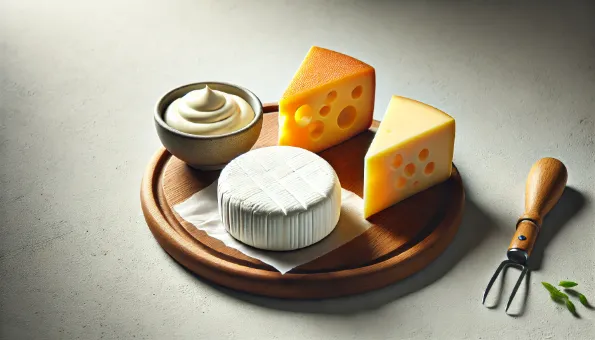Vegan Cheese: Plant-Based Styles, Nutrition & Best Uses
Dairy-free cheeses made from nuts, soy, oats or coconut—available as blocks, slices, shreds and spreads; nutrition varies widely by formula.

What Is Vegan Cheese?
Vegan cheese is **dairy-free** and crafted from bases like **cashews/almonds**, **soy**, **oats**, **coconut oil**, or **aquafaba**. Styles range from **cultured nut cheeses** (tangy, aged) to **starch-and-oil cheeses** designed to **melt and stretch**.
Nutrition (typical, per 30 g slice)
- **Calories:** ~70–120 (varies)
- **Fat:** 5–10 g (coconut-oil styles can be high in saturated fat)
- **Protein:** 1–4 g (nut/soy-based usually higher than starch-and-oil)
- **Sodium:** 150–300 mg (check label)
- May be **fortified** with calcium, B12 & vitamin D (brand dependent)
- Naturally **lactose-free** & **cholesterol-free**
Benefits
- **Dairy-free** option for vegans & lactose intolerance
- **Versatile** formats: slices, shreds, spreads, blocks
- **Cultured** versions offer complex, cheese-like tang
- Often **fortified** with calcium/B12 for plant-based diets
Considerations
- **Nutrition varies**: many meltable types are **low in protein** and **high in saturated fat** (coconut oil)
- **Allergens:** nuts, soy, coconut
- Some products are **ultra-processed**—choose shorter, whole-food ingredient lists when possible
How to Use
- **Melting:** mozzarella-style shreds for pizza/lasagna; add a splash of water and cover to steam-melt
- **Slices:** cheddar-style for burgers & sandwiches
- **Spreads:** cashew cream cheese on bagels, dips & frostings
- **Crumbly:** feta-style over salads, grain bowls, roasted veg
- **Cooking tip:** for extra stretch, look for **tapioca/konjac/agar** on the label
Summary
Vegan cheese spans cultured nut cheeses to meltable starch-and-oil styles. **Check labels** for protein, calcium/B12, sodium and saturated fat to match your goals.
- 1. Vegan Cheese
vegan cheese – biljni sir na bazi orašastih plodova (indijski orah, badem), soje, kokosa ili zobi; može biti fermentisan/kultivisan ili skrobno-uljni; dostupan kao blok, fete, namaz, rendani, topljivi i sl.

